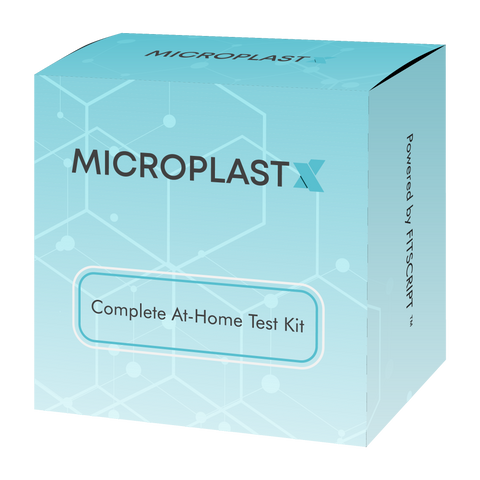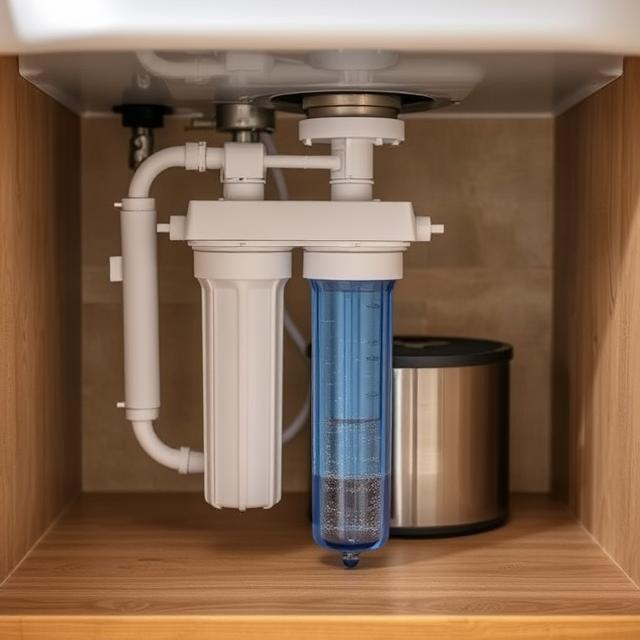How to Avoid Microplastics in Clothing Without Sacrificing Style
Most people don’t realize how much plastic they wear every day. Microplastics in clothing are a major source of pollution, and the problem usually starts with the fabric itself. If you’re wearing synthetic materials like polyester, acrylic, or nylon, you're wearing plastic—and when you wash or wear those clothes, they shed tiny fibers that end up in your environment and your body.
Where Microplastics in Clothing Come From

Microplastics in clothing come mainly from man-made fibers. These fabrics are produced from petroleum-based chemicals and turned into yarns that look and feel like soft textiles. But they don’t behave like natural fibers once they leave the factory.
Common microplastic-shedding materials include:
-
Polyester
-
Nylon
-
Acrylic
-
Elastane (Spandex)
-
Rayon and viscose blends
These fibers might feel breathable or flexible, but they’re still plastic. And because of how they’re made, they’re constantly breaking down and releasing particles.
How Washing Clothes Releases Microplastics
Every time you do laundry, your clothes lose fibers. The more synthetic the fabric, the more it sheds. Washing machines create friction, heat, and water pressure that break synthetic fabrics apart—sending microplastics straight into the drain.
Most household machines can’t filter these fibers, and neither can wastewater plants. That means those particles often end up in rivers, lakes, and oceans.
Here’s what happens when synthetic clothes go through the wash:
-
Friction breaks tiny fibers loose
-
Microplastics wash into the drain system
-
Wastewater treatment misses many of them
-
Fibers move into natural water systems
And the process doesn’t stop there.
It’s Not Just Washing That Causes Shedding
Even if you don’t do laundry, your synthetic clothes can still release microplastics through normal daily use. Just walking around, sitting down, or folding your laundry can cause shedding. You can’t see it, but those tiny fibers are floating in the air or settling into your home.
Microplastics are released during:
-
Drying your clothes
-
Wearing synthetic garments
-
Storing fabrics over time
-
Folding and rubbing items together
That’s how microplastics in clothing turn into an ongoing, invisible problem that stays with you—and spreads far beyond your home.
At MicroplastX, we developed microplastics testing kits to help people find out how much exposure they’re really getting. It’s one thing to know your clothes are synthetic. It’s another to see whether those plastics are showing up in your body. That’s what our kits are built for—getting you real answers.
The Problem With Fast Fashion and Synthetic Fabrics
Microplastics in clothing wouldn’t be such a huge issue if we weren’t surrounded by fast fashion. These days, clothing is cheap, trendy, and everywhere. Stores change collections every few weeks. People are buying more clothes than ever before, but they’re made with lower-quality materials—most of which are synthetic.
Why Fast Fashion Uses So Much Plastic
The fast fashion industry runs on speed and cost. Brands need to produce large amounts of clothing quickly and sell it at the lowest price possible. Synthetic fibers like polyester and nylon are much cheaper than natural materials, and they’re easier to work with in mass production.
Here’s why brands use them:
-
They cost less to produce
-
They dry faster and are wrinkle-resistant
-
They make it easy to add stretch, shine, or smooth textures
-
They’re available in huge quantities and don’t require farming
That’s why it’s common to find synthetic materials even in high-end or “sustainable-looking” clothing. They’re not just in cheap brands—they’re everywhere.
The Link Between Fast Fashion and Microplastic Pollution
The faster the fashion, the more waste is created. Every time a new style hits shelves, it’s made with synthetic blends that shed microplastics. And since fast fashion encourages frequent purchases, people end up owning more clothes than they actually wear.
More production means:
-
More synthetic fabric being used
-
More washing and shedding
-
More microplastics entering the water and air
-
More clothing thrown away, breaking down into plastic pollution
A report found that 35% of all primary microplastics in the ocean come from synthetic textiles. That’s more than any other single source. When you think about how much synthetic clothing is made every year, the impact becomes pretty clear.
How Cheap Clothing Costs More Than You Think
At first, it feels like a good deal. A shirt for ten dollars, a hoodie for fifteen. But those low prices come at a hidden cost. Synthetic clothes don’t just wear out faster—they pollute the environment and expose your body to plastic fibers every time you put them on.
The fast fashion model creates a cycle that’s hard to break:
-
Buy cheap synthetic clothes
-
Wear and wash them frequently
-
Shed microplastics into water systems and your home
-
Toss them when they fall apart
We believe people deserve to know what their clothes are really doing. At MicroplastX, our microplastics testing kits are helping people understand what synthetic fabrics might be doing to their health—not just the planet. Whether you're trying to cut down on plastic or just want to shop smarter, starting with real data is the best way to make change that lasts.
How to Spot Plastic-Filled Clothes When Shopping

Trying to avoid microplastics in clothing starts with knowing what’s actually in your clothes. That’s not always easy. A tag might say cotton or bamboo, but many clothes are made with blended fabrics that still contain plastic fibers. The truth is, unless you read labels closely and know what to look for, it’s easy to end up buying synthetic materials without realizing it.
What Fabric Tags Actually Mean
Most people glance at tags, see a percentage, and move on. But those numbers matter. If your shirt says 60 percent cotton and 40 percent polyester, that polyester is plastic. Even when cotton is listed first, the synthetic blend sheds microplastic fibers when you wear and wash it.
These are the most common synthetic materials to look out for:
-
Polyester
-
Nylon
-
Acrylic
-
Elastane or Spandex
-
Viscose and rayon when blended with synthetics
If any of these are listed on the label, there’s a good chance the clothing will release microplastics.
How to Read Between the Lines on Labels
It’s not always about what the label shows. Sometimes it’s what it doesn’t tell you. A shirt might be marketed as “eco” or “recycled,” but that doesn’t mean it’s plastic-free. In fact, recycled polyester is still polyester—and it still sheds microplastics in clothing.
Things to watch for:
-
Buzzwords like “recycled,” “sustainable,” or “performance fabric”
-
No tag at all or limited fiber information
-
Vague language like “soft blend” or “engineered knit”
-
Super stretchy or water-resistant material
If it feels too good to be true, or if the fabric feels slippery or stretchy, it probably contains plastic.
High-Risk Clothing Items
Some types of clothing are almost always made from synthetic materials. These are usually built for performance, durability, or stretch—exactly the features brands want, and exactly what causes microplastic shedding.
Watch out for:
-
Workout clothes and activewear
-
Yoga pants and leggings
-
Fleece jackets and blankets
-
Fast fashion t-shirts and hoodies
-
Water-resistant outerwear
These items are worn frequently, washed often, and made to be affordable. That makes them a major source of microplastics in clothing.
You might not be able to avoid every synthetic item, but you can take steps to understand how they’re affecting you. At MicroplastX, we created at-home microplastics tests to help you figure out how much plastic your clothes may be introducing into your body. Our tools make it easy to know what you’re exposed to—and help you shop smarter.
Health Concerns and Environmental Damage Caused by Plastic Clothes

Microplastics in clothing aren’t just a pollution problem—they’re a health issue too. Every time you wear, wash, or dry synthetic clothing, plastic particles are released. Some settle in the air around you, others move through water systems, and some may even interact with your body over time.
How Synthetic Fibers Carry Chemical Additives
Plastic fibers are often treated with chemical additives during manufacturing. These chemicals are used to make clothing stretch, resist wrinkles, hold color, or repel water. But when those clothes are worn on your skin every day, the additives can rub off or be absorbed through direct contact.
Synthetic materials may include:
-
Flame retardants
-
Water repellents
-
Antibacterial coatings
-
Softeners and color stabilizers
These aren’t always listed or disclosed, and they can interact with the skin or linger in your home environment long after you’ve bought the clothes.
How Exposure Can Happen Over Time
Long-term exposure to microplastics in clothing doesn’t happen all at once. It happens gradually, through small daily habits—wearing synthetic pants to work, putting on a polyester workout top, or drying fleece in the laundry room.
Here’s how that exposure builds up:
-
Fibers are inhaled from dust or air
-
Skin absorbs plastic additives through contact
-
Microfibers attach to food or surfaces at home
-
Water from washed clothes enters public water systems
Over time, those small particles can enter your body. While scientists are still researching the full health impact, many believe these fibers may contribute to inflammation, hormone disruption, or other chronic issues.
A study reported that synthetic textile fibers found in indoor dust are now one of the most consistent sources of human microplastic exposure. That dust comes from clothing—and it’s almost impossible to avoid in homes filled with synthetic fabrics.
What You Can Do Right Now
You don’t need to wait for the next study or headline. If you’re wearing synthetic clothing regularly, it makes sense to understand your own exposure. That’s why MicroplastX built a solution. Our microplastic detection kits can help you measure how much clothing-based microplastic may be showing up in your body. You’ll get a clear breakdown of exposure and insights that help you take action—whether that means adjusting your wardrobe, changing laundry habits, or choosing cleaner brands.
You can’t change the entire clothing industry overnight, but you can take control of what’s closest to your skin. Starting with knowledge is the best way to protect your body and your home.
How MicroplastX Helps People Test for Clothing-Based Microplastics
Understanding how much plastic is actually affecting your body from your clothes can feel overwhelming. You can try reading labels and switching materials, but the truth is, there’s only one way to know what’s really going on inside. That’s where MicroplastX comes in. We created at-home microplastics testing kits to give you the power to test your exposure directly from your body—not just guess based on what you wear.
Our Testing Kits Are Designed for Real Life
You don’t need a lab, a specialist, or any background in science. Our testing kits are made to be simple and accessible for anyone. If you’ve worn synthetic clothing like fleece, activewear, or fast fashion for years, this is your chance to see what kind of effect it’s had on your health.
What makes our approach easy:
-
Everything you need is in the kit
-
No doctor’s visit or lab appointment needed
-
Results sent securely and privately
-
Clear explanations so you can actually understand what’s going on
We believe that people should be able to check their own microplastic levels without relying on guesswork or waiting for symptoms to show up. That’s why we made it simple from start to finish.
Helping People Hold Brands Accountable
Once people see the results of their own microplastics blood test kit, they start asking better questions. They want to know where the exposure is coming from, what brands are contributing to it, and how they can avoid it in the future.
We’ve seen people use their results to:
-
Shift toward natural and biodegradable clothing
-
Cut out synthetic-heavy outfits from their wardrobe
-
Ask clothing brands for clearer labeling
-
Help spread awareness in their communities
The data helps you take action—and gives you the confidence to change your shopping habits for good.
It’s Not Just About the Clothes
Yes, microplastics in clothing are a major source of exposure. But the real issue is that they follow you everywhere—into your home, your laundry, even your air. Our blood testing kits for microplastics show you how those small fibers might be adding up inside your body over time.
With clear results and easy steps, we help you go from uncertainty to action. You can’t control how clothing is made everywhere, but you can start with what’s in your own bloodstream and go from there.
Better Fabrics to Wear and Brands to Watch
Avoiding microplastics in clothing doesn’t mean giving up on comfort or style. You can still wear things that look good and feel good—without adding more plastic to your body or the environment. It just comes down to choosing better fabrics and shopping from brands that are actually doing the right thing.
Natural Fabrics That Don’t Shed Plastic
The safest way to avoid microplastics is to stay away from synthetics entirely. That means skipping polyester, nylon, and acrylic, and focusing on fabrics that come from plants or animals.
These are great choices if you’re trying to clean up your closet:
-
Organic cotton
-
Hemp
-
Linen
-
Bamboo (without synthetic blends)
-
Wool and alpaca
These materials are breathable, long-lasting, and fully biodegradable. They won’t shed plastic fibers into your wash or your home, and they feel just as soft—if not softer—than their synthetic counterparts.
Brands That Are Setting the Right Example
Some fashion brands are making a real effort to get rid of plastic in their clothes. They focus on full transparency, high-quality materials, and sustainable production. These are the kinds of companies to support if you want to avoid microplastics in clothing without sacrificing style.
Look for brands that:
-
List all fabrics clearly with no vague names
-
Avoid polyester or use only trace amounts for structure
-
Commit to plastic-free shipping and packaging
-
Offer natural dye and toxin-free processes
When in doubt, ask questions. If a company can’t tell you what’s in your clothes, that’s probably not a great sign.
Swaps You Can Make Right Now
It doesn’t have to be all or nothing. You can start with the basics and slowly replace synthetic items with natural ones.
Easy swaps include:
-
Cotton t-shirts instead of poly-blends
-
Hemp or linen trousers instead of stretch pants
-
Wool sweaters instead of fleece
-
Canvas or cork shoes instead of plastic-based trainers
-
Bamboo socks instead of synthetics
You’ll notice the difference—not just in how you feel wearing them, but in the peace of mind knowing you’re reducing your exposure to microplastics.
At MicroplastX, we built our microplastic blood test kit to help people track progress as they switch to cleaner materials. When you know how your choices are impacting your body, you stay motivated to keep going.
The future of fashion doesn’t have to be plastic. It can be better, cleaner, and smarter—and it starts with what you choose to wear.




